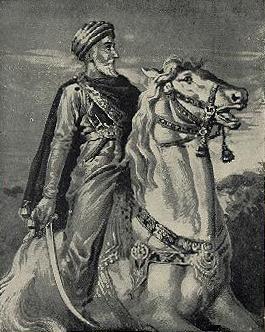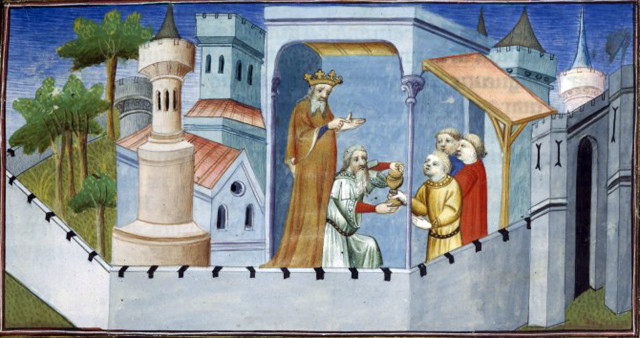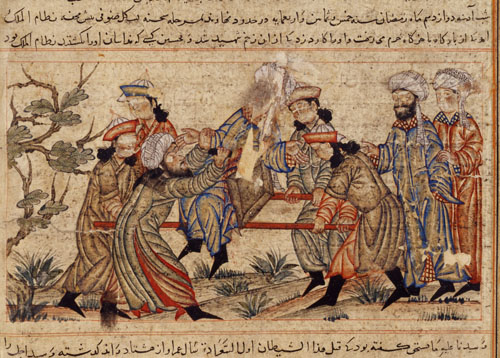Who were the Order of the Assassins?
The year is 1090. A secret order later referred to as the Order of the Assassins begins it’s operations in the impenetrable mountain fortress of Alamut and will soon be known as a terrorist organization responsible for causing unrest in the Middle East during Seljuk rule. Little did anyone know that their roots reached as far back to the death of the Prophet himself back in 683 when the followers of the Islamic faith are divided into numerous smaller or larger factions, the main groups, we know as the Shiites and the Sunnis.
The Order of the Assassins will be born from the followers of Nizar, a separate Ismaili Shiites faction that believes in the leadership of Nizar one of the sons of the Fatimid caliph and Ismailis Imam Al’ Mustansir.
The Order of the Assassins will manage to establish and consolidate their own state, the Nizari state, in the Arab Caliphate covering lands from Persia through Syria, where they will reign for 166 years until their fall because of Mongols’ attacks in the winter of 1256.
The Mongol khan Hulagu flattened Alamut to the ground and thus destroyed almost all documentation that the Order had kept. Before the formal end of their rule, the Persian Nizaris will endure the attacks of the Seljuk Turks and the Crusaders, which at that time (1096) will be fighting the Saracens in order to retake the Holy Lands.
Who was the Leader and Founder of the Order of the Assassins?

In the year 1050 in the city of Kum, Hassan al’ Sabbah, the future leader of the assassins is born and raised in a family of Shiites. Being only 17 years old, Hassan is fascinated by the teachings of the Fatimid Ismailis and decides to follow their beliefs, pledging allegiance to their imam at that time – Al’ Mustansir and is soon made a missionary of the Ismailis’ teachings.
During his missionary years, he will travel across the lands of Egypt and Persia, studying holy texts and creating a plan to overthrow the Seljuks Turks.
By 1094, Hassan al’ Sabbah who has preached the Fatimid teachings across the Seljuk dominions in Persia is now considered the undisputed leader of the Persian Ismailis and their state will soon possess over 40 fortresses in Persian lands and many more will be held by the Syrian Nizaris in the politically fragmented Syria.
He and his successors will manage to hold the fortresses and their state under the vicious attacks of the Seljuk, who did not succeed in destroying the group. At 74 years of age Hassan al’ Sabbah, died in the year of 1124, leaving behind dedicated to the cause many followers, strong leaders and a religiopolitical framework that will serve the Nizari state well in the following years.
The Heritage of the Order of the Assassins
“The Old Man from the Mountain”
One of the most popular myths of the order was spread from the Crusaders who named their leader „Vetus de Montanis”. Myths describe them as a society of absolutely obedient killers under the rule of a charismatic and notorious figure, which at that time was the famous Hassan al’ Sabbah. According to the myths, they would even jump from the highest peak into the deepest pit at his command, therefore entirely trusting their lives and death into the hands of their leader.
“The Gardens of Heaven”

According to Marco Polo, the famous Venetian traveler, who claimed to have visited Alamut in 1271, the Assassins were capturing young boys, drugging and leaving them in the gardens of the fortress. The gardens would be full of beautiful dark-eyed girls, fountains of honey, milk and wine and everything else the religion promised to the believers.
Once the effect of the drug wore off the boys would think that they have been in heaven and would follow the leader to the death, believing all it to be truth. However, it is unlikely for this to be the truth since Hassan al’ Sabbah killed one of his own sons for drinking wine.

The first ever political assassination conducted by the order was that of the great Vizier Nizam al’Mulk in 1092, who was the vizier for the Seljuk sultans for over 30 years. He was the right hand of Malik Shah and Alp Arslan, who in the eyes of the Order were the detested rulers of the Persian lands.
There is a theory saying that the assassins took the life of Ibn Al’ Khashshab in 1123, a judge and governor of Aleppo during Seljuk rule and the first to preach jihad, a term that later became very popular.
In the year of 1175, it is believed that the Assassins were after the life of Saladin himself, the Sultan of the Saracens. The story goes that Saladin decided to go on a march against the Assassins in the mountains Al’ Nusayri, but after he found a poisonous dagger and a life threatening note in his tent, he immediately stopped his campaign and decided to go to Mount Lebanon and fight the Crusaders instead and look for a way to draw the Order to his side.
One of the most notable assassinations conducted possibly by the Order was the execution of Conrad of Montferrat, before his coronation as king of Jerusalem in 1192. According to the story, he was killed in Tyre by two assassins, while he was traveling home after he had visited Bishop Fillip of Bov.
The legends for this medieval Order will be spread by the works of Marco Polo, the Crusades, and the travelers, as well as the enemies of the Shiites Islam. The legends and myths about the Order of the Assassins still are well-known today and their reputation for blood-letting and murder is well-established.
